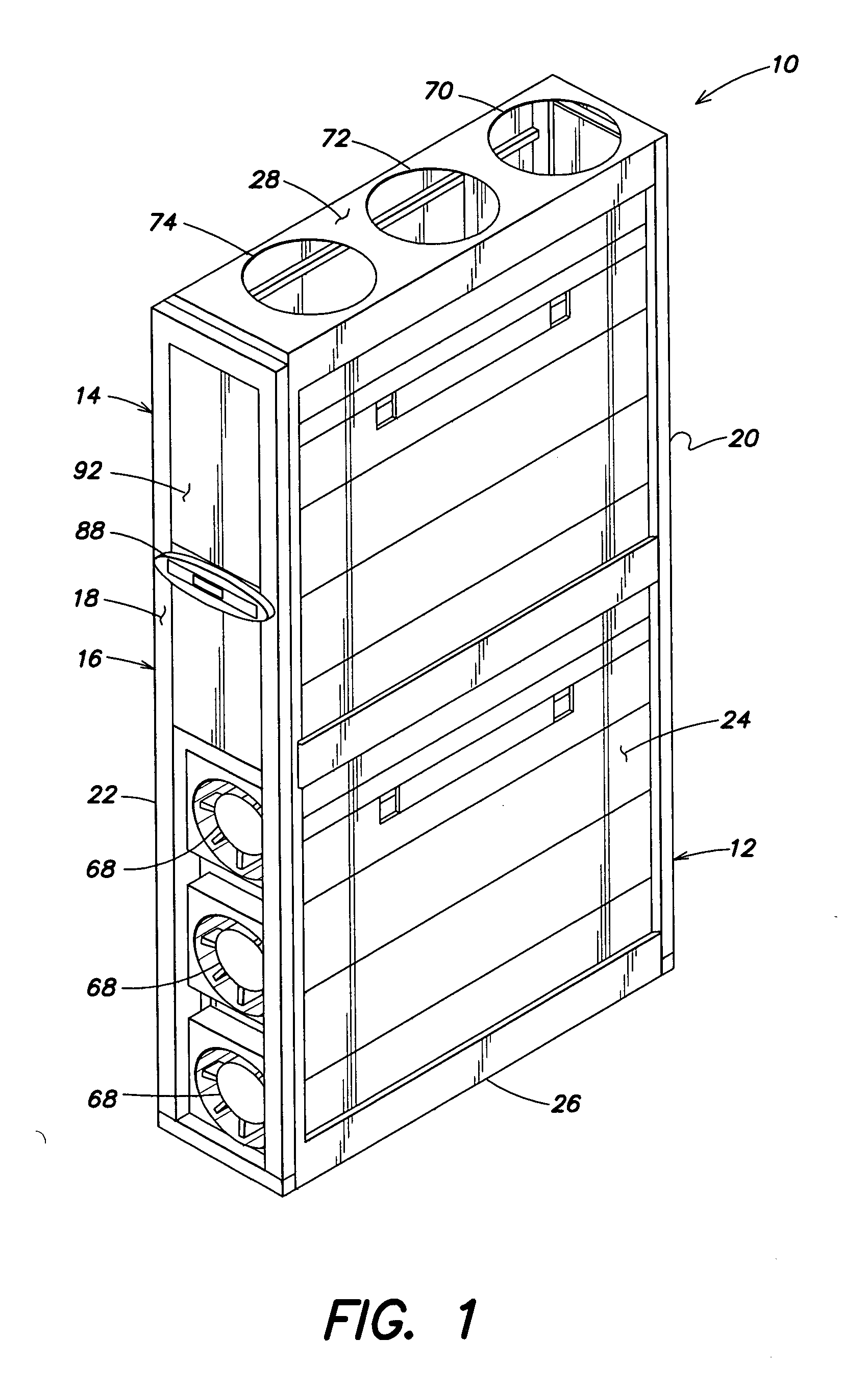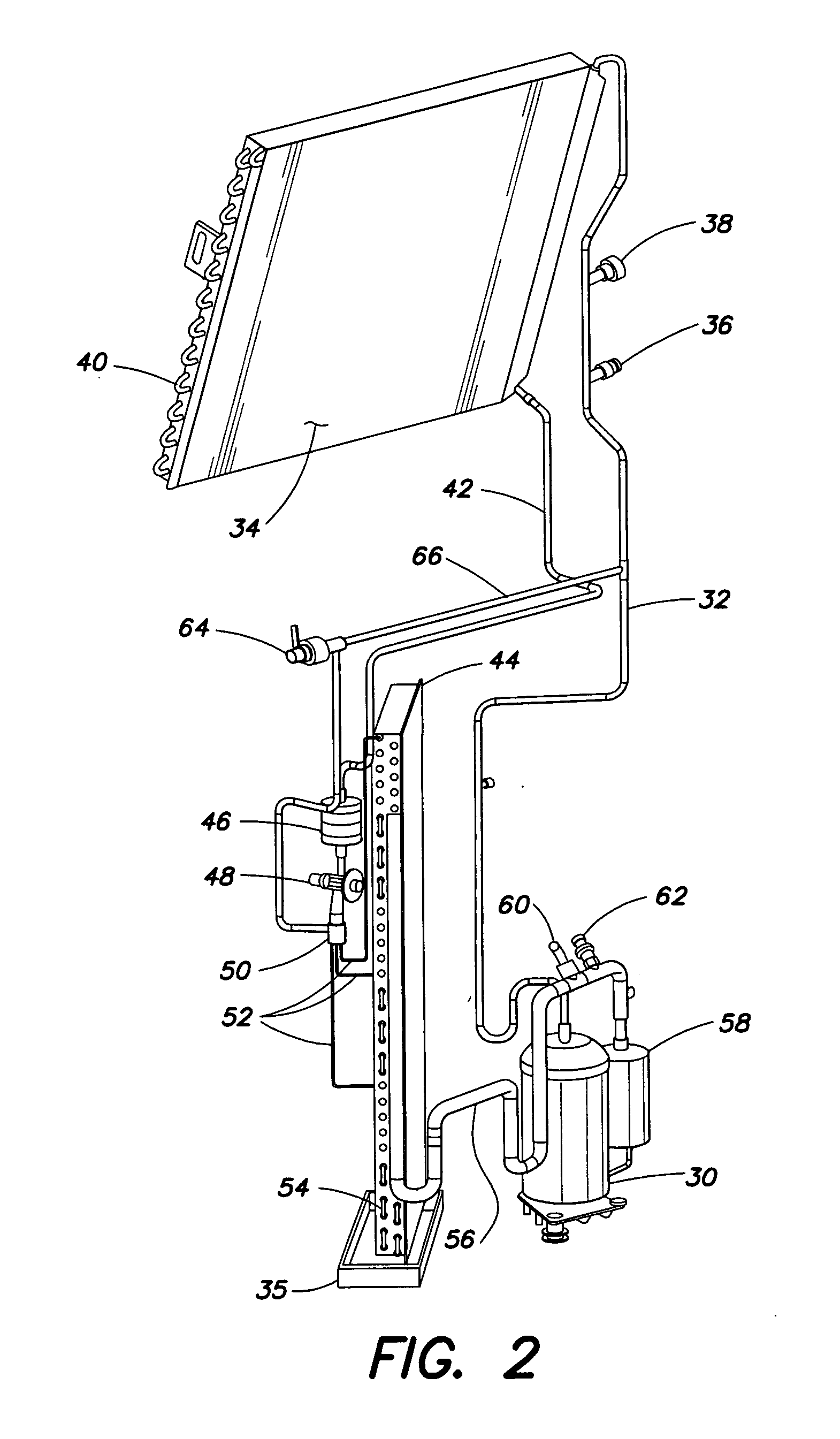Method and apparatus for cooling
a technology for cooling devices and rooms, applied in domestic cooling apparatus, lighting and heating apparatus, domestic applications, etc., can solve problems such as increasing the number of electrical devices mounted in each rack, raising concerns about adequate cooling equipment, and heat produced by rack-mounted equipment that can have adverse effects on the performance, reliability and useful life of equipment components
- Summary
- Abstract
- Description
- Claims
- Application Information
AI Technical Summary
Benefits of technology
Problems solved by technology
Method used
Image
Examples
example
[0115]Using polynomial equation (7), which employs ARI-540 polynomial equation (8), the capacity of a cooling unit may be calculated as follows. Equation (8) is employed, assuming the following coefficients for a cooling unit using a 60 Hz compressor:
Compressor CoolingCoefficientCapacityC12.206E+04C23.403E+02C3−2.265E+02C44.067E+00C5−8.068E−01C61.352E+00C71.309E−02C8−1.900E−02C9−2.813E−03C10−3.881E−03
[0116]The following estimated values for fan power, condensate production rate and compressor heat loss may be assumed:
[0117]Pf—300 Watts;
[0118]CR—1.6 pounds / hour; and
[0119]Qcomp loss—150 Watts.
[0120]And finally, the following test measurements may be employed for determining the coolant suction and discharge dew point temperatures:
[0121]Evaporating Pressure—136 psig;
[0122]Discharge Pressure—438 psig;
[0123]Suction Dew Point Temperature—47.1° F.; and
[0124]Discharge Dew Point Temperature—123.9° F.
[0125]Based on the foregoing, cooling capacity is calculated as follows:
Qcomp=6393 Watts
Pc=(6...
PUM
 Login to View More
Login to View More Abstract
Description
Claims
Application Information
 Login to View More
Login to View More - R&D
- Intellectual Property
- Life Sciences
- Materials
- Tech Scout
- Unparalleled Data Quality
- Higher Quality Content
- 60% Fewer Hallucinations
Browse by: Latest US Patents, China's latest patents, Technical Efficacy Thesaurus, Application Domain, Technology Topic, Popular Technical Reports.
© 2025 PatSnap. All rights reserved.Legal|Privacy policy|Modern Slavery Act Transparency Statement|Sitemap|About US| Contact US: help@patsnap.com



